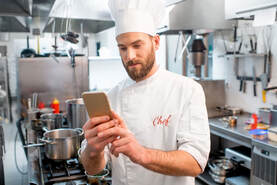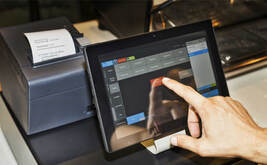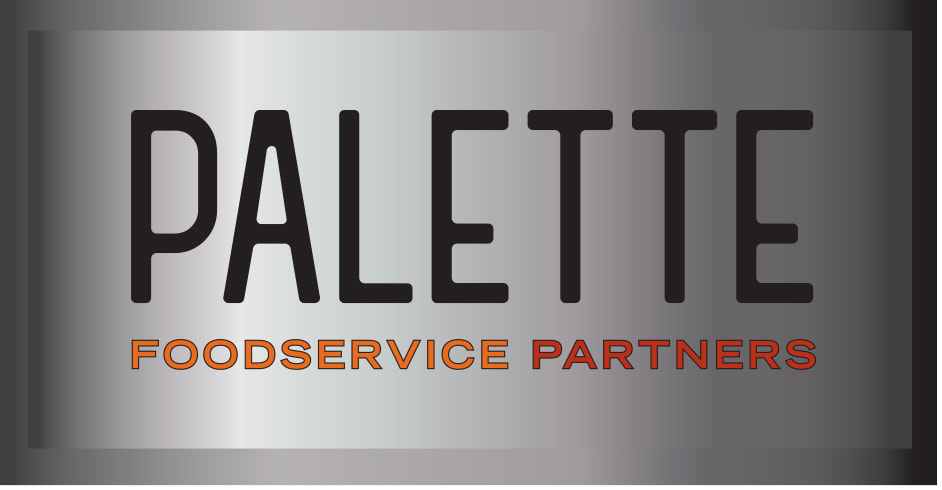 Restaurant hiring is again creeping back up after a rocky few years. Tech-enabled training can help you engage new staff and ensure they have the knowledge to manage not only your processes but also the demands that challenging guests can pose. Specifically, by providing mobile-accessible training that staff can digest easily and dip into on a continuous basis, you can make training more relevant by updating it with lessons the business is learning in the moment. That kind of support helps staff do their job with the confidence you’re providing them with the tools they need to perform it well. And according to research from the employee engagement software firm Axonify, that kind of support is rare: They found that 37 percent of workers say they have yet to receive training for handling dangerous or challenging events.  The most appealing customer-facing tech doesn’t matter if your kitchen can’t complement it with speedy, accurate, safe order preparation and service. That may be why a number of casual dining brands, including the likes of Chili’s, are stepping back from sexier tech like robot servers and drone deliveries to focus more resources on tech that can help fine-tune kitchen operations, Nation’s Restaurant News reports. What may be most helpful are kitchen display systems that take the mental work out of juggling multiple order streams, as well as tech that can identify areas for improvement in food safety. Where are your bottlenecks in the kitchen? Even if you don’t know where they exist and how much of an impact they are having on your operation, there is likely a tool that drills down on that information for the benefit of your business.  If you’re considering tech investments this year – and most restaurant operators are – your approach to the human side of new systems is just as important as the technology itself. By identifying the main problems you need to solve (drilling down to the specific information you need at the level of the transaction, for example), you can clearly defining your priorities and focus on the tools that can address them. What roadblocks – in the form of existing contracts and systems – are currently in your way? How will any new tech integrate with your existing systems and allow for greater customization and flexibility down the line? Consider how to blend these systems seamlessly. That involves getting the right people involved to account for how existing and new tech is used, who throughout your operation is using it, and how it can deliver for those people in ways that will improve their ability to do their job without a difficult training process. This can also help you foresee what might go wrong and minimize the chances of it happening. Identify some ambassadors at various levels of your organization who can help tout the new system, demonstrate it to others and answer questions as people get up to speed.  By this point, restaurant operators know how important it is to capture data. But what happens when restaurants collect data from catering customers, loyalty club members, retail customers or other parts of your operation – but the information remains stuck in its various silos? As you collect data, ensuring that you can extract it, then combine it with other data across your business and derive meaning from it, won’t only help your business now – it will also put you in a stronger position to adjust as the business needs to change. What tools do you currently use to ensure your data can be moved around and be informed by the other intelligence you have collected about your guests’ habits?  In an industry that struggles to attract and retain staff, having to assign tasks that are not simply repetitive or dangerous, but which also simply keep people from the profit-making areas of their work, can make it difficult to keep your best employees. A talented general manager, for example, likely didn’t join the business for their love of paying invoices or reordering supplies. Automating such tasks has benefits beyond boosting the efficiency of your business. After all, when your senior-level staff can move repetitive admin off their plates, they have time to focus on developing new marketing ideas, helping chefs bring new menus to fruition, greeting guests and correcting problems that stand in the way of positive online reviews.  Data management is one of the most important things you can do for your restaurant – to support the business right now and to protect its future. But losing ownership of valuable data, or not connecting the dots within it, can be a missed opportunity for many restaurants. Perhaps due to partnerships with certain third-party vendors, you are not able to market directly to your guests – or understand who they are. Or maybe your guests order your food from a wide range of sources and as a result, you may have a number of different pools of data floating around independently – not being informed by the others. How well does your POS help you harness every piece of guest data you can grasp, from every place your guests order from you, and then make informed decisions about how to reach the people who support your business?  Restaurant technology is not only about helping an operator respond with speed and precision to what’s happening in the moment; it’s also about predicting and preparing for what is likely to happen in the near future. In a recent report from FSR Magazine, the CEO of the restaurant Bartaco said that technology such as predictive prep lists, dynamic pricing and smart kitchen display systems will be critical to helping operators preserve margins without passing excessive costs on to guests this year. All of these solutions are about anticipating demand and preparing for it. How well does your current tech setup allow you to anticipate what’s coming – and rapidly change course as needed?  We’ve all had this experience in a restaurant at some point: The food has been eaten, beverages consumed, and all that stands between you and the next item on your agenda is your bill – if only you could get the attention of your server. This experience was the topic of a recent article in the Washington Post in which a diner praised the food and service of a certain restaurant she had visited, then walked out without paying when she was unsuccessful in hunting down her server or her bill in the empty dining room at the end of the evening. She emailed the restaurant later and settled up – but it’s a shame that the experience at the tail end of this person’s meal (and not the quality food and service leading up to it) was what this guest remembered. If making these final guest impressions positive is a challenge in your restaurant, tab management technology may help – and in the process, allow you to alleviate labor challenges and increase bill totals. It can help you take advantage of impulse orders – and extra round of drinks mid-meal, or a dessert, for example – that might be reconsidered if a guest is unable to flag down a server in the moment. It allows a guest to settle up whenever they choose – and not let any delay in receiving their bill tempt them to tip less than they otherwise would.  As restaurants progressively become more like tech companies that happen to serve food, a restaurant’s technology spending and tech-driven earnings will take on ever-greater importance. According to a recent report from Nation’s Restaurant News, the average “digitally sophisticated” restaurant chain spends approximately 2-4 percent of their sales on technology. This calculation can be difficult to come to for a restaurant with dozens of pieces of software and peripheral equipment, but consider it something to work toward – particularly as you look to invest in new tech. Knowing your return on investment for your existing tech stack can help you ask critical questions when the next tech-driven solution comes around. |
Subscribe to our newsletterArchives
July 2024
Categories
All
|



 RSS Feed
RSS Feed